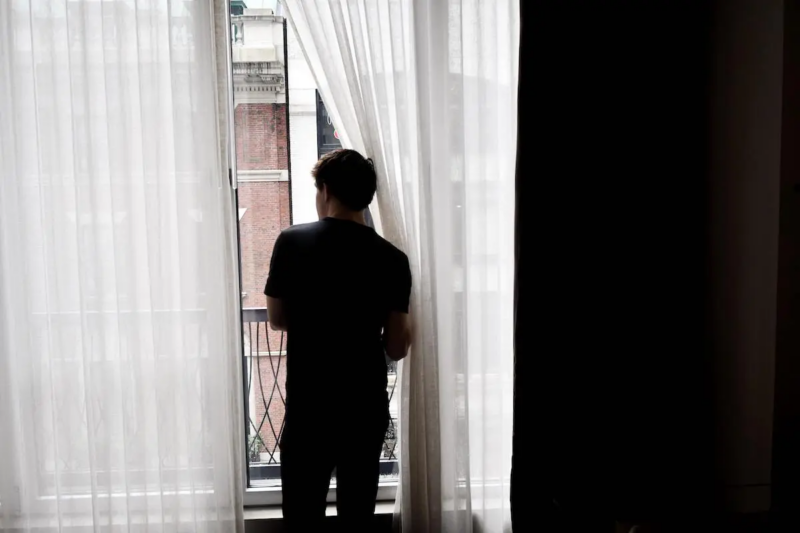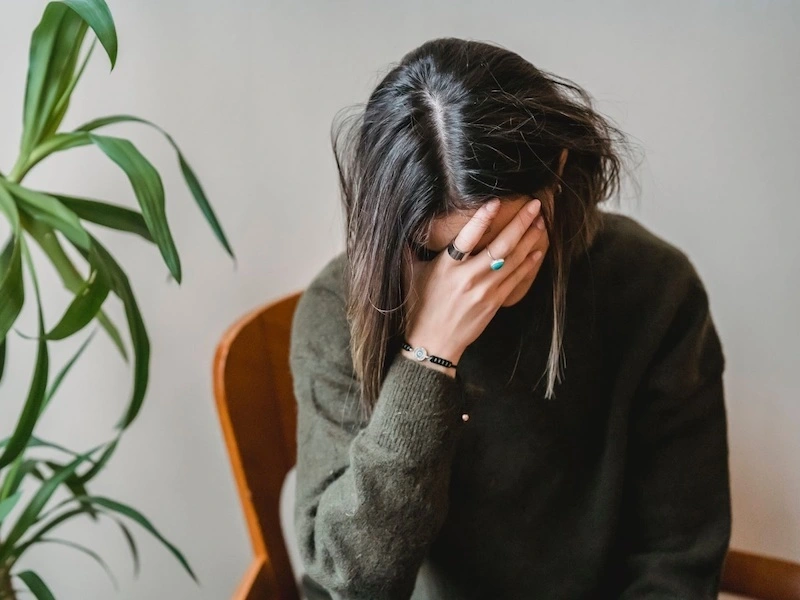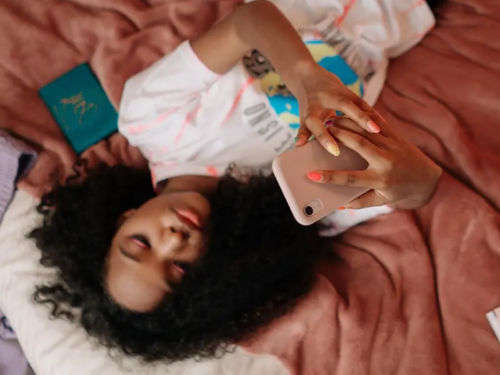
Table of Contents
Phobias 101

Written By: Alex Bachert, MPH
August 5, 2022
6 min.
Learn about social phobia, agoraphobia, and specific phobias, as well as therapy-based options to cope.
Learn more about our Clinical Review Process
Table of Contents
A phobia is an excessive, irrational fear of something that poses little or no real threat. A person with a phobia likely knows that their fear is out of proportion to the situation, but they still can’t overcome it.
There is a phobia for every letter of the alphabet, which means that people can have phobias related to just about everything, from achluophobia, a fear of darkness, all the way to zoophobia which is a fear of animals. There is even a fear of fears: phobophobia.
If there’s a phobia that you’ve been struggling with, we’re here to remind you that you’re not alone. About 19 million Americans have one or more phobias with varying severity, and most people are first affected during early childhood.
Whether your case is mild or you fall into a group whose daily life is seriously affected by their fear, there are several ways to cope. Below, we break down three main categories of phobias and potential solutions.
Three categories of phobias
According to the American Psychiatric Association, there are three different categories of phobias: social phobia, agoraphobia, and specific phobias.
Social phobia
Social phobia, or social anxiety, is more than being shy when making new friends or feeling self-conscious in certain situations. Instead, it’s an intense and persistent fear of being embarrassed, humiliated, or judged by others in social or performance situations. People with social phobia spend a disproportional amount of time worrying about looking foolish, making a mistake, or being laughed at.
Social phobia often relates to public speaking, meeting new people, eating in public, or using public restrooms. For many teens with social phobia, the potential distress is so overwhelming that they’ll try to avoid situations in general—no easy feat when you’re in high school. Plus, anecdotes and data show that the pandemic has caused more adolescents to suffer from social phobia as of late.
In addition to the anxiety, social phobia can have other long-term effects on a teen’s life, such as:
- Missing social connections. For some teens, social phobia will prevent them from joining a club, trying out for the play, or asking their crush on a date. It can even stop someone from taking a seat in the lunchroom and make them more prone to bullying, which may then exacerbate the phobia.
- Struggling in school. Social phobia might also make teens too nervous to ask a question in class or seek extra help from a teacher, let alone volunteering to answer a question or lead a group project.
- Avoiding risks or new experiences. Life is full of lessons, right? You might be disappointed about not making a team or receiving a bad grade after forgetting to study, but these are the moments that help you to grow stronger.
Agoraphobia
Agoraphobia is an anxiety disorder that causes people to feel severe fear when they are in places or situations where escape might be difficult or embarrassing. With this type of anxiety disorder, people are often concerned with specific situations like:
- Using public transportation or riding the school bus
- Being at home alone
- Being in enclosed spaces, like the mall or a sports stadium
- Being in open spaces, like bridges or parking lots
- Standing in line
Agoraphobia is closely related to another anxiety disorder called panic disorder. Panic disorder is when a person has had at least two panic attacks and then spends at least one month worrying about experiencing another. If you’ve had a panic attack somewhere specific, you may develop a fear of returning to that place which can drastically hinder your ability to socialize, work, go to school, or travel.
Join the Charlie Health Library
Get mental health updates, research, insights, and resources directly to your inbox.
You can unsubscribe anytime.
Specific phobias
Specific phobias, also known as simple phobias, relate to a certain object or situation. Simple phobias are often based on something that might not occur very often, such as flying or seeing a shark, so they pose a less severe threat for everyday life than social phobia and agoraphobia.
According to the DSM-5, specific phobias typically fall within five general categories:
- Fears related to the natural environment (i.e., heights, darkness, thunder)
- Fears related to animals (i.e., spiders, dogs, sharks)
- Fears related to medical issues (i.e., injections, broken bones, falls)
- Fears related to specific situations (i.e., flying, riding an elevator, driving)
- Other fears (i.e., fear of choking, loud noises, costumes)
Research suggests that nearly 20 percent of adolescents live with some sort of specific phobia, but less than one percent have severe impairment due to their fear.

Phobias: signs and symptoms
Regardless of the specifics of a person’s phobia, they’re likely to experience some or all of the following symptoms:
- An understanding that their fear is unreasonable but an inability to control their thoughts or reaction
- An immediate feeling of intense panic when exposed to the source (or even thoughts of the source) of their fear
- Doing everything possible to avoid the situation or object that causes the panic, or enduring it with extreme fear or anxiety
- Physical reactions, including nausea, sweating, rapid heartbeat, tight chest, or difficulty breathing
It's also important to note that those with complex phobias may suffer from more than one related fear. For example, someone with social phobia might also fear speaking in public (glossophobia) or rooms full of people (koinoniphobia). For teens with agoraphobia, they might also have monophobia, fear of being left alone, or claustrophobia, a fear of feeling trapped in closed spaces.
Do you need more support with
your mental health?
Charlie Health can help.
Phobias: diagnosis and treatment
When your phobia starts to interfere with your relationships and daily activities, it's probably time to speak with a healthcare professional—either in person or virtually. Phobias often share similar symptoms with other anxiety disorders, so an evaluation is an important step in understanding exactly how to help.
The good news is that phobias are considered to be highly treatable, especially specific phobias. Below are several of the most common and successful treatment methods.
Exposure therapy
Also known as desensitization therapy, exposure therapy was developed to help people confront their fears. The idea is that by gradually exposing a person to their phobia, they’ll eventually learn to break the pattern of avoidance and become less fearful of it.
There's no one-size-fits-all approach, so it's best to work with your healthcare provider to figure out how to tackle your phobia. There's in vivo exposure, which is when you directly face your fear in real life, and imaginal exposure, which is when you vividly imagine the fear. In situations where in vivo exposure is not possible, such as with a fear of flying, you can try virtual reality exposure to evoke the feeling and sensations related to the fear.
Cognitive behavioral therapy
Cognitive behavioral therapy, or CBT, is considered to be an effective psychological treatment for phobias. For those living with a phobia, CBT can help them to identify the dysfunctional belief in order to better control the related feelings and responses. The idea is that by understanding the why and how of your thought cycles, you’ll be better prepared to handle your fears. CBT is typically a time-limited, structured approach, but the specifics of treatment might vary from person to person.
Medication
Psychotherapy tends to be the first line of defense against phobias, but occasionally people will use medications like antidepressants and anti-anxiety drugs to manage their fears. Your healthcare provider is the best person to help you decide if medication is right for you.
Learn how Charlie Health can help
Phobias come in all shapes and sizes—just like people. Whether your phobia is simple or complex, it’s reassuring to know that there are various resources to help you cope with the fear.
Charlie Health is committed to providing teens and adolescents with a proactive approach to mental wellness—all from the comfort of their home. Our intensive outpatient program helps you to connect with other people experiencing anxiety, phobias, and other mental health issues. We offer cognitive behavioral therapy, as well as family therapy, individual therapy, and supported groups, as an opportunity to educate and support your entire family.
To learn more, read our page about other types of anxiety disorders in teens and young adults here.
References
https://www.nimh.nih.gov/health/statistics/specific-phobia
https://adaa.org/understanding-anxiety/facts-statistics
https://www.nimh.nih.gov/health/publications/social-anxiety-disorder-more-than-just-shyness
https://www.nytimes.com/2021/09/27/us/social-anxiety-pandemic.html
https://www.ncbi.nlm.nih.gov/pmc/articles/PMC6447508/
https://www.ncbi.nlm.nih.gov/books/NBK519704/table/ch3.t11/
https://www.nimh.nih.gov/health/statistics/specific-phobia
https://medlineplus.gov/phobias.html
https://pubmed.ncbi.nlm.nih.gov/24938078/
https://www.apa.org/ptsd-guideline/patients-and-families/exposure-therapy





